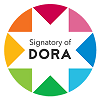Practical considerations on epilepsy and anesthetic management
DOI:
https://doi.org/10.37135/ee.004.01.09Keywords:
epilepsy, pharmaceutical preparations, patient care managementAbstract
Epilepsy, disease characterized by the alteration of brain electrical activity. Epileptic seizures are classified: partial, generalized and unknown. The diagnosis is established through clinical correlation and electroencephalography. The maintenance antiepileptic treatment depends on the specific type of crisis. The epileptic status constitutes the persistence of a convulsive crisis for more than five minutes (for clinical effects) that requires intensive pharmacological management with benzodiazepines, phenytoin, phenobarbital and other medications. The behavior and management of the anesthetic procedure in the context of a patient with epilepsy requires an adequate preoperative assessment in order to research the existence of comorbidities, characteristics of the seizures, pharmacotherapy received and their interactions with certain anesthetic agents. The administration of those anesthetics with proconvulsivantes effects (etomidato, ketamine, enflurano, sevoflurane, fentanyl, alfentanil, remifentanil, meperidina, among others) should be avoided in epileptic patients. Benzodiazepines, thiopental, propofol, isofuran, halothane, desflurane, among others are considered as safe anesthetic agents.
Downloads
References
Berg A, Berkovic S, Brodie M, Buchhalter J, Cross J, van-Emde-Boas W. Revised terminology and concepts for organization of seizures and epilepsies: report of the ILAE Commission on Classification and Terminology, 2005–2009. Epilepsia. 2010; 51(4): 676-85.
Lowestein D. Convulsiones y Epilepsia. En: Fauci A, Braunwald E, Kasper D, Hauser S, Longo D. Harrison. Principios de Medicina Interna. Vol 2. 17th ed. Mexico D.F.: McGraw Hill; 2009. p. 2498-512
Organización Mundial de la Salud (OMS). Epilepsia. [Internet].; 2017 [citado 28 Abr 2017. Recuperado a partir de: http://www.who.int/mediacentre/factsheets/fs999/es/. 4. Instituto Nacional de Estadísticas y Censos. Anuario de Camas y egresos hospitalarios. [Internet]. Quito: INEC; 2015 [citado 2015 Abr 16]. Disponible en: http://www.ecuadorencifras.gob.ec/camas-y-egresos-hospitalarios-2015/.
Commission on Classification and Terminology of the International League Against Epilepsy. Proposal for revised clinical and electroencephalographic classification of epileptic seizures. Epilepsia. 1981; 22(4): 489-501.
Casas-Fernández C. Análisis crítico de la nueva clasificación de las epilepsias y crisis epilépticas de la Liga Internacional contra la Epilepsia / A critical analysis of the new classification of epilepsies and epileptic seizures of the International League Against Epileps. Rev Neurol. 2012; 54(3): 8-18.
Maranhão M, Gomes E, De Carvalho P. Epilepsia y Anestesia. Rev Bras Anestesiol. 2011; 61(2): 124-36.
Working Group on Status Epilepticus. Treatment of convulsive status epilepticus: recommendations of the Epilepsy Foundation of America’s Working Group on Status Epilepticus. JAMA. 1993; 270: 854-9.
Viaggio M, Bernater R, Campanille V, Fontela M. Status epiléptico: consideraciones clínicas y guías terapéuticas. Revista Neurológica Argentina. 2007; 32(1): 56-62.
Lowenstein D, Bleck T, Macdonald R. It is time to revise the definition of status epilepticus. Epilepsia. 1999; 40: 120-2.
Mayer S, Claassen J, Lokin J, Mendelsohn F, Dennis L. Refractory status epilepticus: frequency, risk factors and impact on outcome. Arch Neurol. 2002; 59(29): 205-10.
Stoelting R. Pharmacology and Physiology in Anesthetic Practice. 4th ed. Philadelphia: Lippincott, Williams & Wilkins; 2006.
Pedroviejo V, Ayuso M, Jiménez A. Tratamiento anestésico del paciente adulto epiléptico no neuroquirúrgico. Rev Esp Anestesiol Reanim. 2009; 56: 425-35.
Cangiani L, Posso I, Potério G, Nogueira C. Tratado de anestesiologia SAESP. 6ta ed. Sao Paulo: Atheneu; 2006.
Flores J, Armijo J, Mediavilla A. Farmacología Humana. 5th ed. Barcelona: Masson- Salvat; 2008.
Ruffmann C, Bogliun G, Beghi E. Epileptogenic drugs: a systematic review. Expert Rev Neurother. 2006;6(4):575-89.
Perucca E. Marketed new antiepileptic drugs: are they better than old generation agents? Ther Drug Monit. 2002;24(1):74-80.
LaRoche S, Helmers S. The new antiepileptic drugs: scientific review. JAMA. 2004;291(5):605-14.
Modica P, Tempelhoff R, White P. Pro and anticonvulsante effectsof anesthetics (Part II). Anesth Analg. 1990; 70: 433-44.
Bhagat H, Dash H. Anesthesiologist’s role in the management of an epileptic patient. Indian J Anaesth. 2006; 50: 20-6.
Ren W. Anesthetic management of epileptic pediatric patients. Int Anesthesiol Clin. 2009; 47: 101-16.
Meyer S, Grundmann U, Kegel B, Gortner L, Shamdeen G. Propofol: pro-or anticonvulsant drug? Anesthesia & Analgesia. 2009;108(6):1993-4.
Schulze-Bonhage A, Elger C. Induction of parcial epileptic seizures by flumazenil. Epilepsia. 2000; 41: 186-92.
Borris D, Bertram E, Kapur J. Ketamine controls prolonged status epilepticus. Epilepsy Res. 2000; 42: 117-22.
Burmeister-Rother R, Streatfeild K, Yoo M. Convulsions following ketamine and atropine. Anaesthesia. 1993;48(1):82.
Reddy R, Moorthy S, Dierdorf S. Excitatory effects and electroencephalographic correlation of etomidate, thiopental, methohexital, and propofol. Anesth Analg. 1993; 77: 1008-11.
Manninen P, Burke S, Wennberg R, Lozano A, El Beheiry H. Intraoperative localization of an epileptogenic focus with alfentanil and fentanyl. Anesthesia & Analgesia. 1999; 88(5): 1101-6.
McGuire G, El‐Beheiry H, Manninen P, Lozano A, Wennberg R. Activation of electrocorticographic activity with remifentanil and alfentanil during neurosurgical excision of epileptogenic focus. British journal of anaesthesia. 2003; 91(5): 651-65.
Iijima T, Nakamura Z, Iwao Y, Sankawa H. The epileptogenic properties of the volatile anesthetics sevoflurane and isoflurane in patients with epilepsy. Anesthesia & Analgesia. 2000; 91(4): 989-95.
Burchiel K, Stockard J, Myers R. Metabolic and electrophysiologic mechanisms in the initiation and termination of enflurane induced seizures in man and cats. Electroencephalogr Clin Neurophysiol. 1975; 38: 555.
Spacek A, Neiger F, Krenn C, Hoerauf K, Kress H. Rocuronium-induced neuromuscular block is affected by chronic carbamazepine therapy. The Journal of the American Society of Anesthesiologists. 1999; 90(1): 109-112.
Roth S, Ebrahim Z. Resistence to pancuronium in patients receiving carbamazepine. Anesthesiology. 1987; 66: 691-3.
Wright P, McCarthy G, Szenohradszky J, Sharma M, Caldwell J. Influence of chronic phenytoin administration on the pharmacokinetics and pharmacodynamics of vecuronium. Anesthesiology. 2004; 100: 626-33.
Moore D, Bridenbaugh L, Thompson G, Balfour R, Horton W. Bupivacaine: a review of 11,080 cases. Anesthesia & Analgesia. 2004;57(1):42-53.
Voss L, Sleigh J, Barnard J. The howling cortex: seizures and general anesthetic drugs. Anesth Analg. 2008; 107: 1689-703.
Durham D. Management of status epilepticus. Crit Care Resusc. 1999; 1: 344-53.
Cheng M, Tempelhoff R. Anesthesia and epilepsy. Curr Opin Anaesthesiol. 1999; 12: 523-28.
Vuksanaj D, Deshpande J. Anesthesia for neurosurgery in infants and children. ASA Refresher Courses Anesthesiol. 2008; 36: 215-26.
Jaramillo J, Hernández E. Manejo Anestésico para Cirugía de Epilepsia. En: Rubio D. Lineamientos para el tratamiento quirúrgico de la epilepsia. 1ra ed. México D.F.: Secretaría de Salud (México); 2002. p. 115-23.
González-Villavelázquez M, Castelazo-Arredondo J, Igartúa-García L. Manejo anestésico en cirugía funcional. Revista Mexicana de Anestesiología. 2006; 29(1): 176-82.
Buchtel H, Passaro E, Selwa L, Deveikis J, Gomez‐Hassan D. Sodium methohexital (brevital) as an anesthetic in the Wada test. Epilepsia. 2002; 43(9): 1056-61.
Johnson K, Egan T. Remifentanil and propofol combination for awake craniotomy: case report with pharmacokinetic simulations. J Neurosurg Anesthesiol. 1998; 10: 25-9.
Roset I, Muangman S, Vavialala M. Clinical experience with dexmedetomidina for functional neurosurgical prodedures. J Neurosurg Anesthesiol. 2004; 16: 362.



















